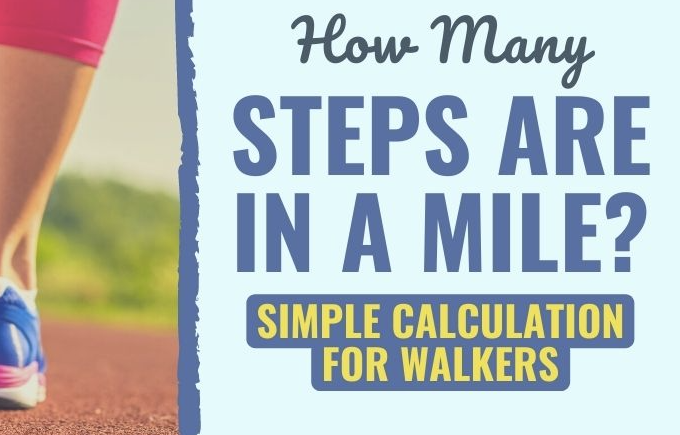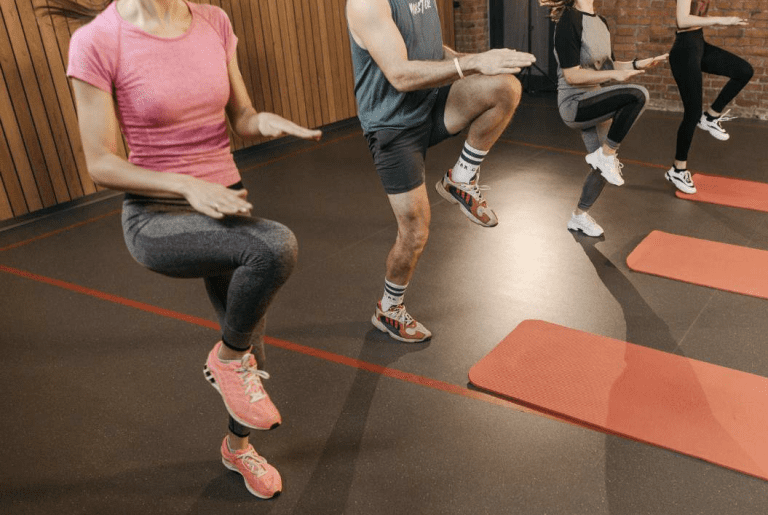This question often sparks debates among fitness enthusiasts and professionals alike. In this comprehensive blog post, we will delve into the intricate dynamics of both exercises, comparing sprinting to jogging in terms of their physiological impacts and benefits.
We’ll examine the effects of slow- and fast-twitch muscles while doing these activities, plus look into how they can influence mental health. The high-intensity nature of sprinting workouts and their role in increasing muscle mass will be explored, alongside the fat-burning potential inherent to such exercises.
Conversely, the benefits of a slower tempo will not be disregarded. Jogging’s impact on bone strength and cardiovascular health also makes it an excellent cardiovascular exercise option for many individuals.
In addition to analyzing individual factors that might influence whether you choose sprinting or start jogging due to your personal fitness goals, we’ll also touch upon incorporating rest days and active recovery strategies within your workout routine. So if you’ve ever wondered “is sprinting better than jogging?”, stick around as we unravel this complex topic together.
Understanding the Dynamics of Jogging and Sprinting

Jogging and sprinting are both forms of running that offer numerous benefits for physical and mental wellbeing. However, they activate different types of muscle fibers during these exercises. While jogging activates slow-twitch muscle fibers, sprinting engages fast-twitch ones.
The Difference between Slow-Twitch and Fast-Twitch Muscles
Slow-twitch muscles, also known as Type I fibers, are endurance-oriented muscles used in activities like long-distance running or cycling. They’re efficient at using oxygen to generate energy for extended periods without fatigue.
Fast-twitch (Type II) muscles are bigger and not as adept at using oxygen, but they can generate short bursts of power or velocity – ideal for intense activities such as sprints.
Mental Health Benefits Associated with Jogging and Sprinting
The mental health benefits associated with both jogging and sprinting cannot be overstated. Regularly engaging in either form of exercise has been linked to improved mood, better sleep quality, and reduced stress levels, according to a study published by The American Journal Of Psychiatry.
- Jogging: As a low-impact activity that you can do at your own pace, it’s great for beginners looking to improve their fitness level gradually while enjoying nature if done outdoors.
- Sprinting: On the flip side, it’s an intense workout that releases endorphins quickly, leading not only to increased calorie burn but also enhanced mood post-workout, often referred to as ‘runner’s high’.
Sprinting: The Ultimate High-Intensity Exercise
Sprinting is the epitome of high-intensity workouts, far surpassing other forms such as jogging or steady-state cardio. Unlike boring jogging or other steady-state cardio, sprinting requires you to push your body to the max for short bursts. This intense nature of the exercise makes it incredibly effective at improving muscle mass and burning fat.
How does sprinting improve muscle mass?
The secret behind sprinting’s muscle-building power lies in the type of muscle fibers it engages – fast-twitch ones. These are larger than their slow-twitch counterparts and have greater potential for growth when stimulated through activities like weightlifting or, indeed, sprinting. The explosive movements required during sprints put these fibers under stress, leading them to grow stronger and bigger over time.
The fat-burning potential of high-intensity exercises like sprints
Beyond just building muscles, there’s another significant benefit that has made sprinting popular among fitness enthusiasts: its ability to burn fat effectively. Sprint training triggers what is known as the “afterburn effect” (or EPOC), where your body continues burning calories long after you’ve finished exercising due to increased metabolic rate. Studies show that this can lead to up to 24 hours of post-exercise calorie burn, which aids significantly in weight loss efforts.
But don’t rely solely on sprints for your workout routine. While they’re great for quick results, incorporating variety into your workouts will ensure balanced development across all areas – strength, endurance, and flexibility alike.
Adding variety to your workout routine
Incorporating different types of runs within your regimen can be beneficial too. For instance, adding intervals within either type of run enhances performance. But remember to balance with other forms of exercise too. Before starting any new regimen, consult with a professional trainer who will guide you through warm-ups before commencing intense workouts, thus reducing the risk of injury, especially if there’s a history of previous injuries involved.
Sprinting is a high-intensity exercise that is better than jogging for building muscle mass and burning fat. It engages fast-twitch muscle fibers, leading to their growth and triggers the afterburn effect, which continues calorie burn long after exercising. However, it’s important to incorporate variety into your workout routine and consult with a professional trainer before starting any new regimen to avoid injury.
Advantages of Low Intensity Running – Jogging
Jogging is an ideal exercise for those seeking a low-impact, cardiovascular workout that can be adjusted to suit individual fitness levels. Jogging, unlike sprinting which necessitates explosive power and activates fast-twitch muscle fibers, is a low-intensity exercise that concentrates on slow-twitch muscles.
Impact of low-intensity running on bone strength
The repetitive impact from each step taken during a jog has been shown to strengthen bones over time. This process, known as bone remodeling, helps maintain bone density and reduces the risk of osteoporosis. Jogging can be beneficial for more than just physical fitness; it may also help promote healthier bones.
Cardiovascular benefits derived from regular jogs
Jogging isn’t just about strengthening your skeletal system; it’s also an excellent way to maintain cardiovascular fitness. Regular jogs increase heart rate, leading to improved circulation and oxygen supply throughout the body. Over time, this results in lower resting heart rates, signifying better cardiac efficiency.
A study published by the Journal of the American College of Cardiology found that even 5-10 minutes of daily jogging at slow speeds significantly reduces risks associated with cardiovascular diseases such as stroke or coronary artery disease. For more information about the benefits of jogging, please refer to this source.
Incorporating jogging into your routine doesn’t require much either – all you need are comfortable shoes, loose clothing for ease of movement, plus motivation to keep going. Regular jogging can have a profound effect on physical and mental health, so it’s worth fitting into your schedule – just make sure to wear comfortable shoes and clothing for ease of movement. Remember, though, always listen to your body and take breaks as needed to prevent overexertion and injuries.
Jogging is a low-intensity workout that strengthens bones, improves cardiovascular health and can be done at any pace. Regular jogs increase heart rate leading to improved circulation and oxygen supply throughout the body, resulting in lower resting heart rates signifying better cardiac efficiency. So put on your running shoes and hit the pavement for some jogging.
Role in Longevity – Both Sprinting & Jogging
Whether you’re an enthusiast of the intense dash or lean toward a more laid-back trot, both running styles have been associated with greater longevity. This is largely due to their ability to reduce stubborn visceral abdominal fat and increase overall aerobic power.
Reduction in Visceral Abdominal Fat through Consistent Cardio Activities
A study published by The Journal of Obesity found that regular cardio activities such as jogging and sprinting can help decrease harmful belly fat. This type of fat, known as visceral abdominal fat, has been associated with various health issues including heart disease and diabetes. The reduction in this kind of body fat contributes significantly towards slowing down the progression process of age-related diseases.
Boosted Aerobic Power Leading To Increased Lifespan
In addition to reducing dangerous belly fats, both sprints and jogs also contribute positively towards increasing your aerobic power. By optimizing your body’s oxygen utilization during physical activity, you can develop greater stamina and consequently extend your lifespan by reducing the risk of chronic illnesses.
The benefits don’t stop there though. According to an article on Mayo Clinic’s website, enhanced aerobic capacity can lead directly toward longer life spans by decreasing risks for chronic illnesses like cardiovascular disease or stroke among others.
In essence, whether you choose short bursts of activity like sprints or longer duration runs such as jogs will depend on personal preference along with individual factors such as current fitness level, training goals, and injury history. But one thing remains clear – incorporating either form into your routine could potentially add years to your lifespan.
Building Muscles vs Burning Calories – What’s Your Fitness Goal?
Identifying your fitness goal is crucial to enhance your physical fitness. Do you want to build muscles or burn calories? This will aid you in figuring out if running or jogging is the more suitable choice for your objectives.
Muscle-building with Regular Sprints
Sprinting is a powerful tool for muscle development. It targets fast-twitch muscle fibers, responsible for generating short bursts of strength and speed, similar to strength training exercises. Incorporating high-intensity sprints into your weekly routine can stimulate these fibers, leading to increased muscle mass over time. However, sprinting primarily targets specific muscle groups such as hamstrings and quadriceps, so combining weight lifting with sprints would give more comprehensive results.
Benefits of Combining Bodyweight Workouts with Steady-state Jogs
If calorie burning or strengthening joints and ligaments is more aligned with your fitness goals, consider adding low-intensity steady-state (LISS) cardio like jogging along with some bodyweight exercises.
- Jogging: It helps burn calories efficiently due to its longer duration compared to sprinting, even though at a lower intensity level. Plus, being a low-impact exercise, it’s easier on joints, making it suitable for people across different age groups.
- Bodyweight Exercises: These work multiple muscles simultaneously, providing an effective full-body workout without any equipment requirement, aiding in overall toning besides calorie burnout.
In conclusion, there isn’t a one-size-fits-all when deciding between jogging versus sprinting since both offer unique benefits depending on individual needs and preferences. Choose wisely considering personal health conditions too, if any. Remember, consistency is key to achieving desired results irrespective of the chosen form of cardio activity.
Balancing Different Forms of Exercises for Optimal Performance
No single fitness plan works for everyone. Whether you’re a fan of sprinting or prefer the steady rhythm of jogging, incorporating intervals within either type of run can significantly enhance your performance. But remember – balance is key.
The Importance of Consulting Professional Trainers Before Embarking Upon New Workout Regimes
Before taking up a new workout regime that involves sprints or jogs, it is essential to seek advice from an experienced trainer. They will guide you through proper warm-ups before commencing intense workouts and help reduce the risk of injury – especially if there’s a history of previous injuries involved.
A Mayo Clinic article on exercise intensity explains how understanding your body’s signals during different types of exercises helps in maintaining an optimal balance between high and low-intensity workouts.
In addition to providing guidance on technique and form, trainers also offer invaluable advice about rest days and recovery periods – crucial elements often overlooked by many fitness enthusiasts.
Finding the Right Balance Between High and Low Intensity Workouts
Mixing up high-intensity exercises like sprints with lower intensity ones such as jogs not only prevents boredom but also promotes overall physical endurance. It’s all about finding what works best for your body while ensuring variety in your routine.
- Sprinting: This form provides excellent cardiovascular benefits while boosting muscle strength due to its high-intensity nature.
- Jogging: A more relaxed yet effective way to maintain cardiovascular health over time without putting too much strain on the body.
Tailoring Your Fitness Routine to Suit Individual Needs and Goals
Your choice between sprinting or jogging should depend upon individual factors such as current fitness level, training goals, and any past injury history. Remember, every person has unique needs when it comes to their health and wellness journey, so always choose wisely.
The article discusses the benefits of incorporating both sprinting and jogging into a fitness routine, with an emphasis on finding the right balance between high and low-intensity workouts. It highlights the importance of consulting professional trainers before starting any new workout regimen to reduce the risk of injury and optimize performance. The reader is reminded that every person has unique needs when it comes to their health journey, so they should tailor their fitness routine accordingly.
Choosing Between Sprints and Jogs: Factors to Consider
Deciding between intense sprints and low-impact jogging is a personal voyage that requires considering individual factors such as fitness level, objectives of training, and past injuries. It’s essential to take into account your unique circumstances, fitness level, training goals, and injury history when deciding which type of cardio suits you best.
Key Considerations When Deciding Between Jogging and Sprinting
- Fitness Level: If you’re new to fitness or returning after a break, jogging might be more appropriate. Sprinting requires physical conditioning that may not yet be present in beginners.
- Training Goals: Are you aiming for muscle growth or fat loss? Your specific fitness objectives can help determine whether sprinting or jogging would be more beneficial for you.
- Injury History: If past injuries are causing concern, it’s important to consider this factor as well. High-impact exercises like sprinting could potentially exacerbate old injuries while lower-intensity workouts such as jogging might offer a safer alternative.
Hear your body and discern what feels best for you. Some people thrive with the adrenaline rush from quick bursts of activity provided by sprints while others find joy in the steady rhythm of long-duration runs offered by jogs. Both forms have their merits, but ultimately it comes down to individual preference based on various factors discussed above.
No matter what form of running exercise you choose, remember that consistency is crucial. Make sure to keep up with regular sessions throughout the week – regardless if they’re intense sprint intervals or gentle jogs around the park. The most effective workout routine will always be one that fits seamlessly into your lifestyle and keeps you motivated over time.
Making an Informed Decision
To make an informed decision about whether sprinting or jogging should dominate your workout regimen, consulting with professional trainers, physiotherapists, doctors, etc., can provide valuable insights tailored specifically towards meeting individual needs. This way, potential risks associated with each form of cardio are minimized, ensuring optimal health benefits are derived from whichever is chosen. Remember, there is no ‘one size fits all’ approach when it comes to fitness.
The article discusses the factors to consider when choosing between sprinting and jogging as a form of cardio exercise. It emphasizes the importance of taking into account one’s fitness level, training goals, injury history, and personal preferences in making an informed decision. Consistency is also highlighted as crucial for any workout routine, regardless of its intensity or duration. Seeking professional advice can provide valuable insights tailored to individual needs while minimizing potential risks associated with each type of exercise.
Rest Days and Active Recovery in Your Fitness Routine
Don’t neglect to take a pause from your physical fitness regimen. Rest days and active recovery are essential for maintaining overall health and preventing injuries.
The Importance of Rest Days and Active Recovery
No matter your level of exercise, it’s essential for your body to have time off after intense physical activity. Rest days allow your muscles to repair themselves, replenish energy stores, and reduce fatigue. On rest days, rather than completely taking a break from exercise, one can opt for lighter activities such as strolling, stretching or yoga to help keep blood flow going and give major muscles some respite. These activities help maintain blood circulation while giving major muscle groups some downtime.
Incorporating rest days and active recovery into your fitness regime helps prevent common mistakes like overtraining, which could lead to injuries or burnouts in the long run. They also maximize benefits by allowing muscles enough time for growth and adaptation post-exercise sessions, improving performance during subsequent workouts.
A well-rounded workout plan should consist of both high-intensity training (like sprints) and low-intensity steady-state cardio (like jogging). However, balance between them with sufficient breaks ensures optimal functioning without causing unnecessary strain or damage long term. It is essential to take into account individual needs, thus consulting a professional trainer prior to any new workout plan is advisable. Therefore, it’s always recommended to consult professional trainers before embarking upon new workout regimes who can guide based on personal factors such as age, medical history, etc.
So, take a break and give your body the rest it deserves. Your muscles will thank you.
Sources: Healthline
FAQs in Relation to Is Sprinting Better Than Jogging
The Benefits of Sprinting vs. Jogging
Sprinting is a high-intensity exercise that can improve muscle mass, boost aerobic power, and burn more calories in less time than jogging.
How Sprinting Affects Your Body Differently Than Jogging
Sprinting engages fast-twitch muscles for explosive strength, while jogging works slow-twitch muscles promoting endurance.
When writing a blog, it’s important to avoid personal opinions, irrelevant information, and controversial topics such as politics or religion. Additionally, making medical claims or giving medical advice should be avoided unless you are a licensed professional.
For more information on the benefits of sprinting and jogging, check out these credible sources: Healthline and Runner’s World.
Conclusion
It depends on your fitness goals and individual factors.
Sprinting is like a superhero workout that builds muscle and burns fat faster than a speeding bullet, while jogging is more like a trusty sidekick that helps with bone strength and heart health.
But don’t pick sides just yet, because a balanced fitness routine that includes both types of exercise is the real hero here.
So, mix it up with some bodyweight workouts, steady-state jogs, and short burst sprints to optimize your performance and prevent injury.
And don’t forget to take some rest days and use active recovery strategies, because even superheroes need a break sometimes.







